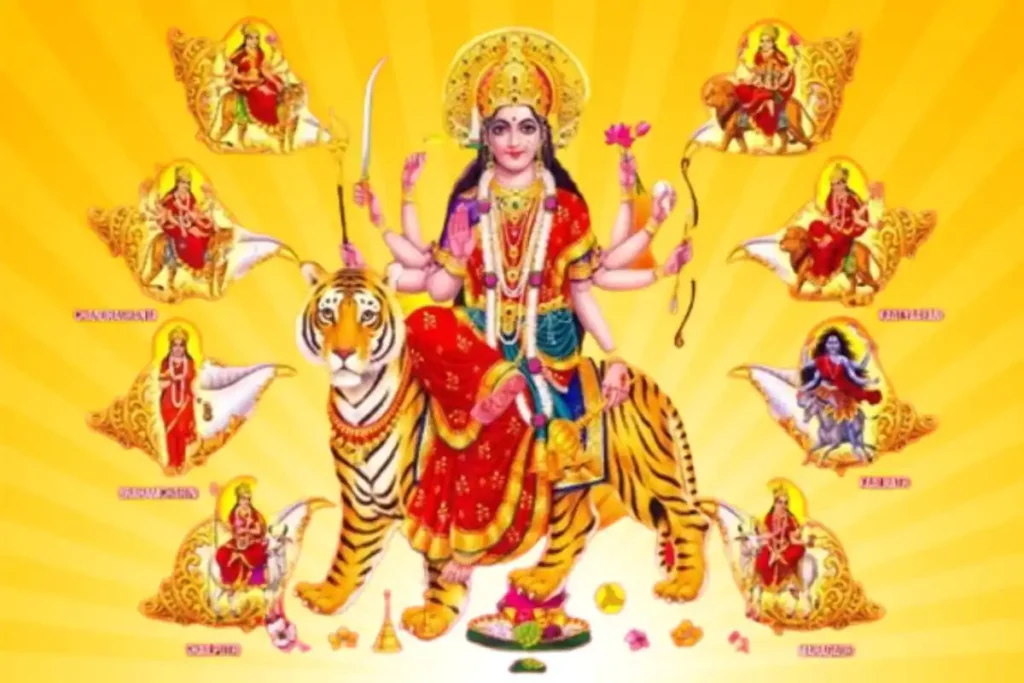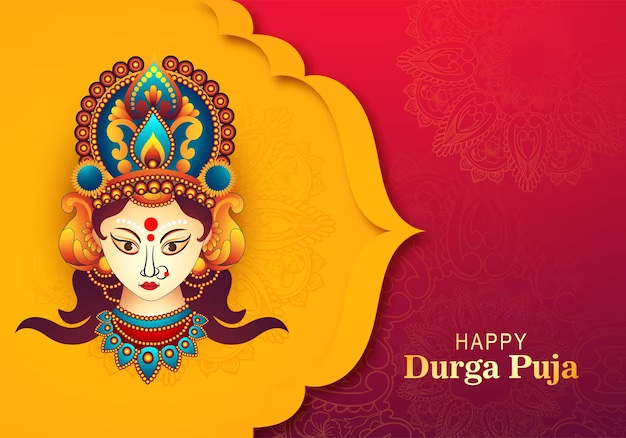The Sacred Festival of Nine Nights

CHAITRA NAVRATRI: CELEBRATING THE DIVINE FEMININE
India is a land of rich cultural heritage, and festivals hold an important place in the lives of its people. One of the most important festivals celebrated in India is Navratri, which is dedicated to the worship of the Divine Feminine. Navratri is celebrated twice a year, once in the month of Chaitra (March-April) and once in the month of Ashwin (September-October). In this article, we will be discussing Chaitra Navratri, its significance, rituals, and customs.
WHAT IS CHAITRA NAVRATRI?
Chaitra Navratri is a nine-day festival celebrated in the Hindu month of Chaitra, which usually falls in March or April. It is also known as Vasant Navratri, as it marks the beginning of the spring season in India. The festival is celebrated with great enthusiasm and devotion in various parts of the country, especially in North India.
SIGNIFICANCE OF CHAITRA NAVRATRI
Chaitra Navratri is dedicated to the worship of Goddess Durga, who is considered the embodiment of shakti or feminine power. It is believed that during these nine days, the Goddess descends on earth to bless her devotees and to remove their sufferings. Each day of Navratri is associated with a different form of the Goddess, and devotees offer prayers and perform puja to seek her blessings.

RITUALS AND CUSTOMS OF CHAITRA NAVRATRI
Chaitra Navratri is celebrated with great fervor and devotion. Here are some of the rituals and customs associated with the festival:
- Ghat Sthapana: On the first day of Navratri, a pot or ghat filled with water is placed in the puja room. A coconut is placed on top of the pot, and a red cloth is tied around it. The pot symbolizes the womb of the Goddess, and it is believed that the energy of the Goddess is present in the water.
- Fasting: Many devotees observe fast during Navratri, which is believed to purify the body and mind. They abstain from eating non-vegetarian food, onion, and garlic. Some devotees also observe complete fasting and eat only one meal a day.
- Puja and prayers: Devotees offer prayers to the Goddess and perform puja every day during Navratri. They offer flowers, fruits, and sweets to the Goddess and chant mantras to seek her blessings.
- Kanya Puja: On the eighth day of Navratri, young girls are invited to the puja room and offered food and gifts. This is known as Kanya Puja, and it is believed that by honoring young girls, one can please the Goddess and seek her blessings.
- Rangoli and decoration: Homes and puja rooms are decorated with flowers, rangoli, and lights during Navratri. People also wear new clothes and jewelry during the festival.

THE NINE FORMS OF THE GODDESS DURING CHAITRA NAVRATRI
During Chaitra Navratri, each day is associated with a different form of the Goddess. The nine forms of the Goddess are:
- Day 1 – Shailputri: On the first day of Navratri, Goddess Shailputri is worshipped. She is the daughter of the mountains and is also known as Parvati or Hemavati. She is depicted with a trident in her right hand and a lotus in her left hand.
- Day 2 – Brahmacharini: On the second day of Navratri, Goddess Brahmacharini is worshipped. She is known for her penance and devotion to Lord Shiva. She is depicted with a rosary in her right hand and a water utensil in her left hand.
- Day 3 – Chandraghanta: On the third day of Navratri, Goddess Chandraghanta is worshipped. She is depicted with a half-moon on her forehead and ten hands, holding weapons and a bell. She is considered to be the embodiment of bravery and courage.
- Day 4 – Kushmanda: On the fourth day of Navratri, Goddess Kushmanda is worshipped. She is depicted with eight arms and is known to have created the universe with her smile.
- Day 5 – Skandamata: On the fifth day of Navratri, Goddess Skandamata is worshipped. She is depicted with four arms and is the mother of Lord Skanda or Kartikeya.
- Day 6 – Katyayani: On the sixth day of Navratri, Goddess Katyayani is worshipped. She is known for her fierce form and is depicted with four arms, holding a sword and a lotus.
- Day 7 – Kalaratri: On the seventh day of Navratri, Goddess Kalaratri is worshipped. She is the fiercest form of the Goddess and is depicted with a sword in one hand and a noose in the other. She is believed to remove all darkness from the lives of her devotees.
- Day 8 – Mahagauri: On the eighth day of Navratri, Goddess Mahagauri is worshipped. She is depicted as a young girl with fair skin and is the embodiment of purity and serenity.
- Day 9 – Siddhidatri: On the ninth day of Navratri, Goddess Siddhidatri is worshipped. She is the giver of siddhis or supernatural powers and is depicted with four arms and a lotus in her right hand.
CONCLUSION
Chaitra Navratri is a nine-day festival dedicated to the worship of the Divine Feminine. It is celebrated with great enthusiasm and devotion in various parts of India, especially in North India. During Navratri, devotees offer prayers and perform puja to seek the blessings of the Goddess. The festival is a time for introspection, purification, and renewal of one’s faith in the Divine. May the blessings of the Goddess be with us always!
Disclaimer
The information provided in this article is solely for educational and informative purposes. It is not intended to promote any particular religious beliefs or practices, nor does it seek to impose any such beliefs on its readers.
The celebration of Chaitra Navratri is a personal choice and varies according to individual beliefs and traditions. The views expressed in this article are the opinions of the writer and do not represent the views of any particular religion, community, or organization.
We make no claims about the accuracy, completeness, or reliability of the information presented in this article. Readers are encouraged to conduct their own research and consult with appropriate experts or authorities before making any decisions or taking any actions based on the information provided.
Furthermore, we do not accept any liability or responsibility for any loss or damage that may arise directly or indirectly from the use of or reliance on the information provided in this article.
We respect all religions and cultures and are committed to promoting harmony and understanding among all communities. We encourage readers to embrace diversity and celebrate differences, and to engage in respectful dialogue with those who hold different beliefs or opinions.

great article